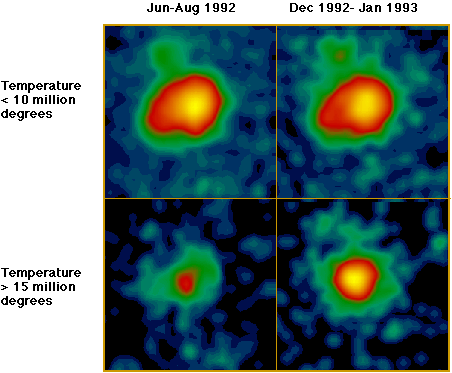


Eta Car underwent a huge eruption in the mid-1800's, and recently it's
showed signs of renewed activity. The star is a known source of extremely
hot gas which produces
X-ray emission, but the source of the X-ray emission has remained
mysterious. In the early 1990's scientists at the Goddard Space Flight
Center found a major clue to the origin of the X-ray emission by detecting
for the first time variations in the amount of X-rays from the source. The
picture above shows 4 false color images of the star taken by the ROSAT
Positional Sensitive Proportional Counter. The left side of the picture
represents images taken in the middle of 1992, while the right side
shows images taken about 4 months later. The top half of the picture
shows X-rays generated by gas at a temperature of 2 million
degrees; the bottom half of the picture shows the image of the X-radiation
from gas at about 20 million degrees. The emission from this extremely
hot, 20 million degree gas increased by about a factor of 2 during this 4
month interval, while the emission from the cooler gas did not change
during this time. Scientists have interpreted this variation to mean that
Eta Carinae is not one star (as so long supposed) but two!